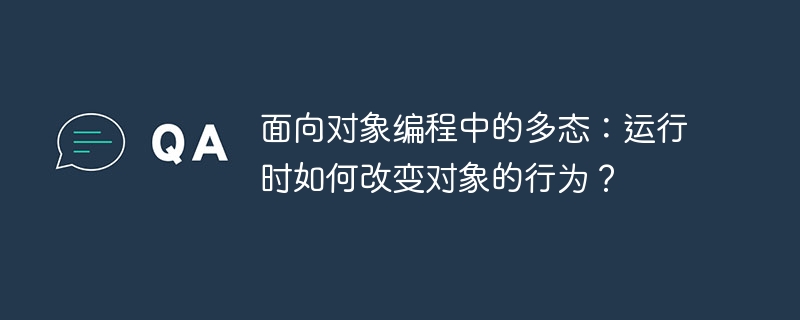◎欢迎参与讨论,请在这里发表您的看法、交流您的观点。
面向对象编程中的多态:运行时如何改变对象的行为?
ID:21623 / 打印
多态的运行时行为更改:深入了解
多态被誉为面向对象编程的基石之一,它允许我们在运行时更改对象的行为。理解这一概念的本质至关重要。
多态的特性
多态基于两个关键特性:
- 接口和实现:定义一个抽象接口,并创建实现该接口的多个类。
- 运行时行为:一个接口类型的变量可以指向实现该接口的任何类的实例。
通过示例了解
以下示例阐释了多态的运作方式:
// 定义一个接口 interface Animal { void makeSound(); } // 实现接口的不同类 class Dog implements Animal { @Override public void makeSound() { System.out.println("Woof!"); } } class Cat implements Animal { @Override public void makeSound() { System.out.println("Meow!"); } } public class Main { public static void main(String[] args) { Animal myAnimal; // 运行时决定创建的对象 myAnimal = new Dog(); myAnimal.makeSound(); // 输出: Woof! myAnimal = new Cat(); myAnimal.makeSound(); // 输出: Meow! } }运行时更改行为
在这个示例中,myanimal 变量被声明为 animal 类型,它可以指向实现 animal 接口的任何对象(例如 dog 或 cat)。
通过在运行时更改 myanimal 指向的对象,我们更改了 makesound() 方法的行为,即使变量的类型没有改变。当它指向 dog 对象时,调用 makesound() 会输出 “woof!”,而当它指向 cat 对象时,它会输出 “meow!”。
多态使我们能够在不改变代码的情况下在运行时修改应用程序中对象的行为,这极大地提高了代码的灵活性和可重用性。
